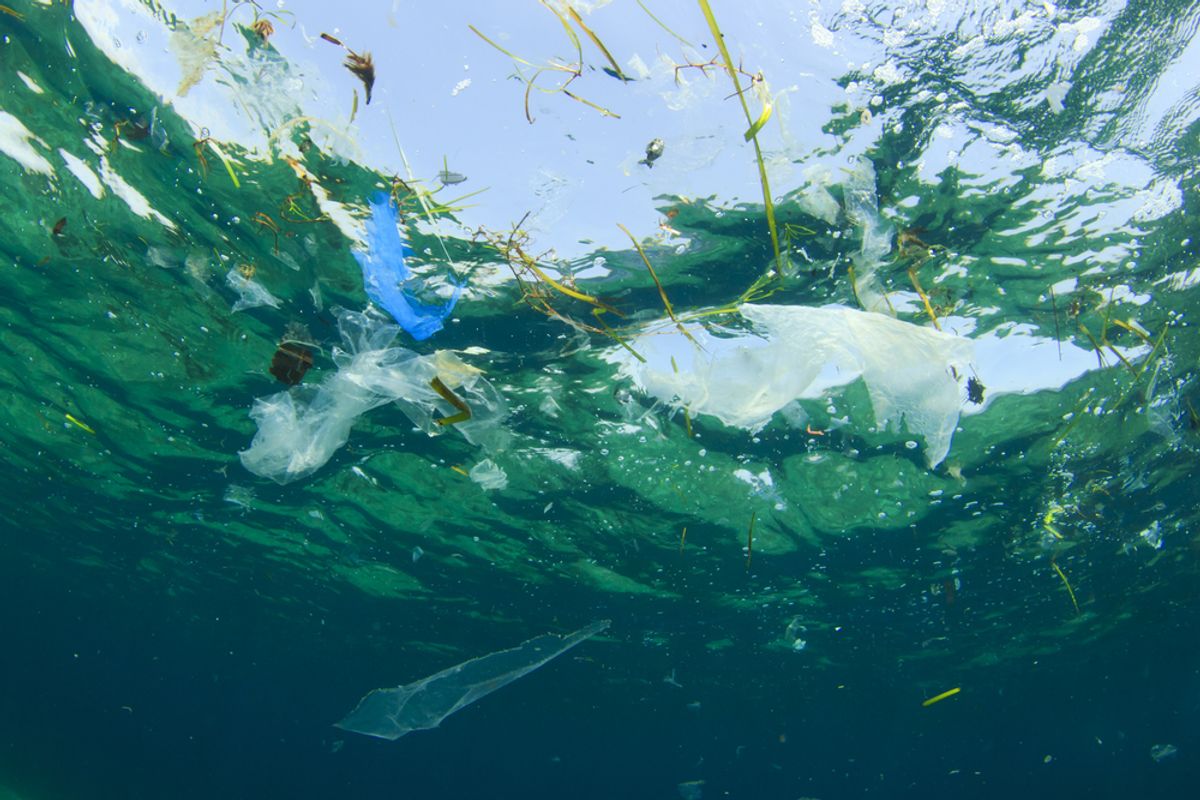Scientists on a cruise trip around the world (lucky scientists) to document the vast amounts of plastic covering the ocean's surface discovered something even more disconcerting: There was less pollution than they were expecting to find. A lot less.
Before you breathe a big ol' sigh of relief, let's think about this for a moment. Plastic doesn't biodegrade. We know that we produced, used and discarded this stuff, and it's not like it magically disappeared. The question, then, is where did it go? And the potential answers, posited by the study's authors, suggests that the pollution problem is actually a lot worse than we thought. Science Magazine explains:
Humans produce almost 300 million tons of plastic each year. Most of this ends up in landfills or waste pits, but a 1970s National Academy of Sciences study estimated that 0.1% of all plastic washes into the oceans from land, carried by rivers, floods, or storms, or dumped by maritime vessels. Some of this material becomes trapped in Arctic ice and some, landing on beaches, can even turn into rocks made of plastic. But the vast majority should still be floating out there in the sea, trapped in midocean gyres—large eddies in the center of oceans, like the Great Pacific Garbage Patch.
To figure out how much refuse is floating in those garbage patches, four ships of the Malaspina expedition, a global research project studying the oceans, fished for plastic across all five major ocean gyres in 2010 and 2011. After months of trailing fine mesh nets around the world, the vessels came up light—by a lot. Instead of the millions of tons scientists had expected, the researchers calculated the global load of ocean plastic to be about only 40,000 tons at the most, the researchers report online today in the Proceedings of the National Academy of Sciences. “We can’t account for 99% of the plastic that we have in the ocean,” says [Carlos] Duarte, the team’s leader.
The researchers' best theory for where it all went? Fish are eating it. And then, plastic not being digestible, either, they're pooping it out. In its new, denser form, it sinks to the bottom of the ocean. It's less clear what happens to the toxic chemicals that tend to accumulate in oceanic plastics, although previous studies have suggested that they seep into the fishes' bodies -- and perhaps, if we end up eating those fish, into our bodies. “There is potential for this plastic to enter the global ocean food web,” explains Duarte. “And we are part of this food web.”

Shares